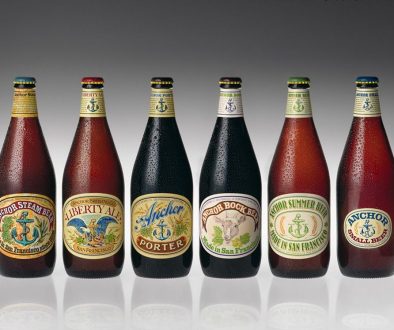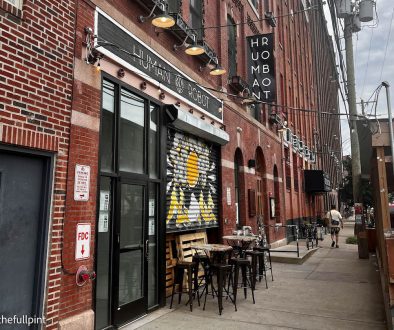2018 Craft Beer Predictions
As we close out 2017, I can say with certainty that the waters are a bit choppy in the craft beer sea. On one hand, you have the positive outlook which points to nearly 6,000 craft breweries in the U.S., then there are those numbers that point to challenges in the market due to multiple factors. Old timers in the beer industry point to a collapse in the mid-90’s when viewing today’s landscape. I think the love of good beer and the vast array of high quality options are much stronger presently, from my casual research. With all that in mind, 2018 will be another year of huge beer news, that some will find shocking. Here are my 2018 craft beer predictions. For better or worse, I feel like this is where things are headed.

ABI/The High End Craft Invasion – Speculation would have it that after the backlash of the Wicked Weed sale, that ABI would slow down on their High End M&A model of purchasing medium sized breweries. I don’t think they are quite done yet and all you have to do is break out a map of the lower 48 states. ABI has a crafty company in Oregon, California, Arizona, Texas, Florida, Colorado, New York, Virginia, Illinois and North Carolina. If I were them, I’d want to have that “local craft beer” in all other major ball parks. That would leave me to believe there will be new brands built or existing brands purchased in Minnesota, Wisconsin, Georgia, Massachusetts, Ohio, Pennsylvania and Michigan.
Duvel USA Expansion – Duvel USA is doing quite well with their three brands, Firestone Walker, Ommegang and Boulevard. There is a common thread among all Duvel-owned breweries, in which they are all classy, highly respected and are mature brands in the market. While I’m not sure who they will acquire, it will be a brewery that falls under that heading.
New England Style IPA – The New England Style IPA craze will not slow down as a consumer favorite. It’s fun and approachable to casual and new beer drinkers, and there is no end to that customer base. On the other side of the coin, beer geeks will start being able to differentiate between the good and the bad once every single brewery makes a version of this style. But as it stands right now, beer drinkers are gobbling up anything in a 16 oz. can with a catchy label. Last but not least, we will see mature brands like Stone, Firestone Walker , New Belgium and Dogfish Head all try their hand at this style on a national level.
San Diego – Because I live 120 miles away from San Diego, it’s easy for me to see that there will be a shakeup there. There is a romantic notion that every neighborhood should have a brewery in walking distance. Hell, I wish I had a brewery in walking distance of my house. With over 120 breweries in San Diego, it hasn’t quite worked out that way. There are pockets of very saturated areas with tons of breweries, which is fun for tourists like myself, but then there are regions that have no options. It would seem that everyone wanted to make a play for the same areas, and it’s kind of backfiring. When you have a dozen brewery satellite tasting rooms coupled with many pubs all within five square miles of each other, it waters down the sales for everyone. My prediction is that the oversaturated spots will see a handful of closures, whether it be young breweries or pubs, and business owners will look to some unchartered territory within the county in hopes of prosper. I also predict at least one sale of a 10-year-old or older brewery to big beer. While the little guys are scrapping for dollars, the bigger guys are scrapping for relevance in this very saturated market.
Pliny The Younger – Pliny The Younger is a fantastic beer, but I think this will be the year that it doesn’t receive the hype it has in previous years. It’s not hazy, it doesn’t come in a can, and it’s not the tallest, most popular kid in class anymore. Here in Southern California, there was a bit of an attitude towards the beer in 2017, and warranted or not, it’s how younger (no pun intended) drinkers treat beer, more like a shiny new toy or collectable and less like a world class beer drinking experience. There isn’t an official way to quantify this prediction, except by watching lines outside of Southern California beer bars and seeing if the beer doesn’t blow through in one afternoon.
Private Equity – In 2018, we will see the first private equity flip. Many have predicted that any of the breweries that have sold a majority to a private equity firm will eventually see their return on investment, and that transaction will likely be to the hands of big beer. I also predict that between five to 10 mature, medium-sized breweries with national distribution will tap the shoulders of a PE firm to stay steady in the market.
The Pastry Stout – Our friend Alex over at dontdrinkbeer.com coined the phrase ‘Pastry Stout’ in reference to sweet stouts laden with adjuncts you would find in candy or pastries. The usual suspects have been vanilla bean, cinnamon, toasted coconut, hazelnuts, cocoa and chocolate. My prediction for 2018 is that this style that has been leaned on by small, trendy breweries will be something we will see from the larger players. These often sweet stouts bring (almond) joy to many who don’t like the bitter and hoppy flavors of their IPA counterparts, and for a medium sized brewery, snagging most of these ingredients isn’t as cost prohibitive as they are to the smaller guys.
Craft Beer Defined – The Brewers Association’s heart was in the right place when they defined craft beer based on barrelage, ownership and product line. After all that has transpired in the last three years with mergers, acquisitions and company funding, it would seem that it’s never been less clear what is and what isn’t craft beer. My prediction is that the Brewers Association will begin drafting new definitions and standards that make things clearer to fellow breweries and consumers, with less alienating language. I don’t think such an impactful change will take place in 2018, but will be drafted or announced in 2018.
Premium Beer Prices – The black and gray market for beer has existed for a long time now. Even though eBay has done their best to curtail online alcohol transactions from those not allowed to sell, it hasn’t stopped opportunists from purchasing and flipping beer. Beers from the likes of Side Project, Bottle Logic, Monkish, Casey Brewing, Toppling Goliath, Jester King and others are sold at very reasonable prices, between $15 to $30 per bottle, only to be sold on the secondary market for upwards of $600 per bottle depending on bottle count and how quick the beer sells out. I predict that some or all of the breweries named will command a bigger slice of the pie on the first sale, and will start selling these beers between $50 – $100 per bottle. Will this raise the price on the secondary or will it turn the opportunists away? Time will tell.
Please feel free to shoot down these predictions or add your own in the comment section below.




October 16, 2018 @ 9:45 am
So, were you right?
December 28, 2017 @ 1:41 am
Mumbai-India is the largest consumer of beer. Several new Craft beers are now available but the bottled Kingfisher Ultra is number 1 in consumption. There i a steady demand of Ciders and light ale but heavy beers like Stout are not too popular
December 27, 2017 @ 10:55 am
Interesting post. I agree with most of it except your thoughts on San Diego. I actually don’t think there are any oversaturated neighborhoods in San Diego, not even North Park, where you can visit 15 breweries and tasting rooms on a 2.2 mile walk (17 in 3.5 miles). San Diego gets 30 million tourists every year, so there are lots of people to help us drink our beer. Also, there are way more than 120 breweries in San Diego now: We are up to 149 craft breweries plus 6 non-craft (Ballast Point, Saint Archer, 10 Barrel) for a total of 155, and there are an additional 30 tasting rooms owned by local craft breweries. If you include craft and non-craft, breweries, tasting rooms and brew pubs (including those where the house beer is craft but not made in San Diego–BJ’s, Oggi’s), there are 199 beer joints in San Diego. Plus all the great craft beer bars. Details here: https://craftbeerinsandiego.com/blog/2017/12/21/how-many-breweries-in-san-diego-december-2017-update
December 19, 2017 @ 1:36 am
Prices are already killing my taste for craft beer. I’m not going to pay a premium for a badly made lager just because it’s craft. Every year I’m starting to buy more and more from the big guys again. Except ipa. That truly is best from someone close and fresh in smaller batches
December 20, 2017 @ 4:38 pm
While I can see where you are coming from, beer is no longer a simple beverage. We have small breweries putting out sours, putting out barrel aged beers and even special blends. Then we have the bigger craft breweries coming out with limited editions. All of this will increase the price. I welcome a $12 10oz pour if it is from say Phantom Carriage or another brewery who is embracing change and fighting the status quo. It’s a 16oz for $8 of say a Pilsner that is brewed from a large brewery that I have a problem with, especially when the retailer buys a 15.5g keg for $140!
December 18, 2017 @ 10:38 pm
The 22 ounce “Bomber” is gone!
Cans will continue to grow!
$12-$16.00 4 Packs are getting to pricey! People are getting tired of the high price of craftbeer!
Kettle Sours, Barrel Aged Beers will grow even bigger.
The old school great brewers of the past will struggle to keep up with the trendy breweries making hazy IPA’s.
Lastly, who ever can create the great 7.0 ABV beer that costs $9.00 6 Pack will be win big time! Will that be Stone Sierra Nevada Anchorsteam or another?
December 19, 2017 @ 2:01 pm
I agree. For IPAs and anything commonly found in six-packs the bomber will continue to lose market. $8 bombers make $24 4-packs seem like a deal. It is also a no-brainer to grab the six-pack when it is $14 compared to a $8 bomber.
We will also see some breweries scaling back their distribution as more and more breweries fight for six-pack shelf space.
Magnums will also transition slowly to 375ml bottles. It is easier to swallow a $15 bottle than a $30 bottle even though it is still the same price per ounce. People are more interested in smaller size barrel-aged beers especially for imperial stouts. Pressure will also be on breweries to release 4-packs of barrel-aged beer as more big breweries enter that space.
December 19, 2017 @ 2:18 pm
*waves from Washington state*
Points to $9.99 six-pack of Iron Horse Irish Death with 7.8% ABV and 12 IBU.
December 18, 2017 @ 5:34 pm
“Sours are the new IPA” takes will plummet even faster than Boston Beer stock.
December 18, 2017 @ 2:54 pm
I feel like 2018 might be the year of the lager.
December 18, 2017 @ 1:24 pm
I think there’d be far too much backlash against a $50-$100 price point for 500ml beers. If anything it’d drive down the price on secondary I would think as there’d be more bottles available as consumers like me stayed away. Fundamental Observation/Forces is a great beer and well worth the price, but at $100/btl? No way in hell I’m paying that.
December 19, 2017 @ 1:38 am
I have still yet to find a bottle of beer over $20 that was worth the price. Hell a bunch have even been drain poors at that price
December 19, 2017 @ 2:05 pm
Lost Abbey manages to sell quite a few bottles at $45 a bottle because they are coming closest to Cantillon quality. A proper gueuze style beer that blends 3 year aged beers with other beers has a certain audience that is willing to pay a premium for it. Though with Cantillon and 3F becoming more available on shelves, it might put pressure on Lost Abbey to lower the price.
$25 seems to be the price many breweries have selected for barrel-aged sours with fruit in a 750ml bottle.